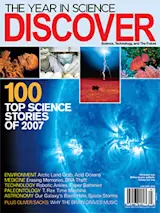With oil at well over $80 a barrel and the bulk of the world’s petroleum reserves locked away in politically prickly places, reducing dependency on fossil fuel has never looked more appealing—and energy economics and national security aren’t the only reasons.
Even President George W. Bush, long skeptical about global warming, acknowledged in his 2007 State of the Union address the importance of curbing greenhouse gas emissions. In April, the Supreme Court chimed in. Ruling in a suit brought by Massachusetts over the regulation of car emissions, the court said that the EPA has the authority to regulate such climate-destabilizing greenhouse gases as carbon dioxide—something the agency had denied. Critics of the agency see the decision as a mandate.
In this new landscape, a spectrum of energy-saving, climate-sparing efforts is springing up. But one of the biggest—the push to produce fuels domestically from fermented corn or other plants—ran into some ...




